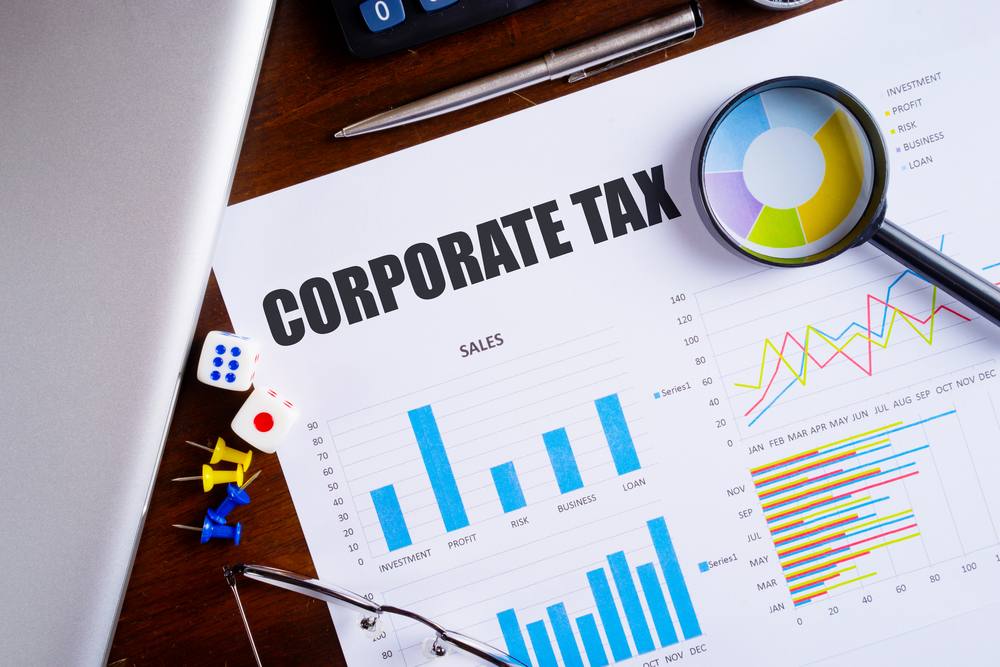
On 20 October 2022, Liz Truss announced her resignation as UK Prime Minister. This means that the following information may change in due course.
The government announced, on 14 October 2022, that the Corporation Tax (CT) rate will increase to 25% from April 2023 as already legislated for – three weeks after Kwasi Kwarteng reversed the planned rise to 25%.
The 25% main rate will apply to companies with taxable profits above £250,000. A small profits rate (SPR) will also be introduced for companies with profits of £50,000 or less so that they will continue to pay CT at 19%.
Companies with profits between £50,000 and £250,000 will pay tax at the main rate reduced by a marginal relief providing a gradual increase in the average CT rate. This is summarised in the table below:
| Taxable profit level | CT Rate |
| > £250,000 | 25% |
| < £50,000 | 19% |
| between £50,000 and £250,000 | marginal tax rate of 26.5% on profits above £50,000 |
Accounting periods straddling 1 April 2023
In scenarios where company accounting year-ends are not 31 March, a blended tax rate will be applicable to the accounting periods that straddle 1 April 2023 as detailed in the table below.
| Year ended | Taxable profits <£50k | Taxable profits >£250k | Marginal rate tax between £50k and £250k |
| 30-06-2023 | 19% | 20.5% | 20.875% |
| 30-09-2023 | 19% | 22% | 22.75% |
| 31-12-2923 | 19% | 23.5% | 24.625% |
| 31-03-2024 onwards | 19% | 25% | 26.5% |
Associated companies impact on CT rates
As part of the changes to the corporation tax rate, the 51% group companies test will be replaced by the associated company rules. The £50,000 and £250,000 profit levels shown in the table above will be reduced if there are associated companies.
A company is associated with another company if at any other time within the preceding 12 months:
-
one company has control of the other
-
both companies are under the control of the same person or group of persons
Example
If there are four associated companies, the profit levels and associated CT rate would be as follows:
| Profit level | CT Rate |
| > £62,500 (£250,000/4) | 25% |
| < £12,500 (£50,000/4) | 19% |
| between £12,500 and £62,500 | marginal tax rate of 26.5% on profits above £12,500 |
What can you do to minimise your Corporation Tax liability?
Should the company year-end fall near 31 March 2023, consider whether the timing of company profits or gains can be influenced so they arise at an earlier date and are taxable at 19%.
For any proposed capital asset disposals, it is potentially worth triggering the gain (via exchange of contracts) before 1 April 2023 to tax the gain at 19%.
If the company accounting period straddles 1 April 2023 and it has significant profits in the early months of the accounting period (prior to 1 April 2023), the company can consider shortening the year end to 31 March 2023 so that all profits are taxed at 19%.
It would be beneficial for loss making companies to carry forward their losses to use against future profits to save corporation tax at a rate of 25% rather than undertaking a loss carry back claim which would only generate a repayment of tax at 19%.
Any brought forward losses (that arose post-1 April 2017) can be utilised in any accounting period so it would be beneficial to save these losses to a later accounting period where the corporation tax rate is at 25% rather than using them in an earlier year.
It would be beneficial to delay any large salary/bonus/pension payments into a later period which will enable corporation tax saving at the higher rate of 25%.
If the company is envisaging high capital expenditure (above the £1m annual investment allowance (AIA) limit), it would be worth considering bringing this forward to utilise the super-deduction availability. If your capital spend is below £1m, the tax saving from claiming the super-deduction prior to 1 April 2023 is similar to the saving from claiming the AIA from that date so there would be no additional benefit to bringing this proposed expenditure forward.
Example
- Pre-1 April 2023: £100,000 x 130% super-deduction x 19% = £24,700 tax saving.
- Post-31 March 2023: £100,000 x 100% AIA x 25% = £25,000 tax saving.
Please note that the super-deduction ends on 31 March 2023.
Companies within the quarterly instalment regime (QIPs) will need to consider their quarterly instalment payments in order to reduce the impact of high interest rates for late payment which are currently at 3.25% pro-rated per day. Therefore, it is worthwhile undertaking detailed estimated calculations to ensure the instalments are as accurate as possible. Shorts can help with these calculations.
Alternatively, it may be worthwhile to overpay your instalment payments to reduce the late payment interest risk. For any overpaid instalments, HMRC will pay credit interest to the company amounting to 2% pro-rated per day. However, any overpayments of tax will need consideration in respect of the cashflow position of the company. Therefore, it will be a case of minimising tax liabilities v impacting on cashflow.
Learn more about how to Reduce Corporation Tax in our guide.

Laura Hayes
I am a Tax Manager at Shorts, having joined in January 2023 after more than four years with a specialist tax advisory firm in Leeds. A Chartered Tax Adviser since 2021, I advise on the full range of UK taxes and have recently worked on projects including management buyouts, group restructures, employee termination payments, and EMI share schemes.
View my articlesTags: Corporation Tax


